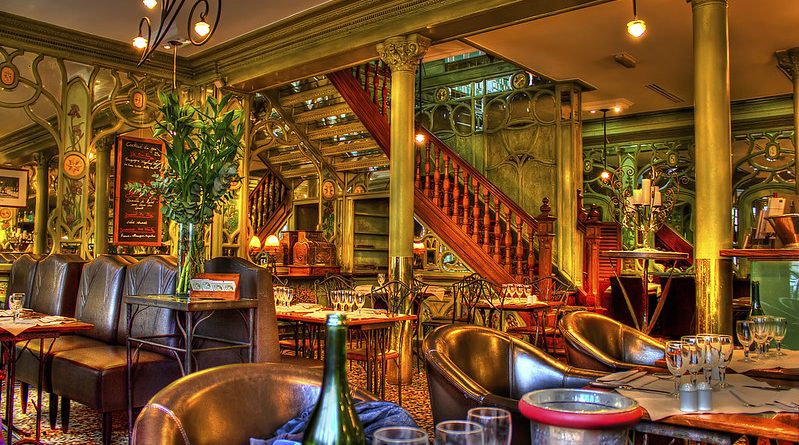Global Cities: Paris
Vietnam
Paris is home to one of the largest Vietnamese diaspora populations in the world and the oldest in the Western world. The greater metropolitan area is home to 200,000 people of Vietnamese descent, who compose one of the city’s most notable and visible ethnic minorities. One of the most long-standing and thriving immigrant communities in the city, Paris’ Vietnamese population have a unique cultural and historical identity.
History
Paris’ Vietnamese community is, by some distance, the oldest in the Western world. This is due Vietnam’s history as a French colony. Vietnam was annexed by France inn 1862 following an establishment of diplomatic relations decades earlier. The French influence in Vietnam is clear in modern times. During Vietnam’s time as a French colony, many Vietnamese intellectuals and members of the upper class settled in France. The children of wealthy Vietnamese flocked to Paris due to the superior educational and economic opportunities.
The First World War was a major turning point in the history of the Vietnamese community in France. Due to Vietnam’s status as a French colony, 50,000 Vietnamese soldiers were enlisted in the war effort, both as soldiers or workers to compensate for the major labour shortage caused by the war. The majority of the workers and the surviving soldiers decided to settle in France rather than return home. This saw the previously insignificant Vietnamese diaspora grow into a full-fledged community, the first Asian diaspora of any significance in the city. Ten years after the First World War, there were 3000 Vietnamese in Paris alone.
In addition to the larger working class Vietnamese community established in the inter-war years, more and more Vietnamese intellectuals and students settled in Paris due to its thriving creative culture. Major figures who lived in Paris during this time included future Vietnamese President Ho Chi Minh. The community continued to grow and organisations were established to cater to the needs of the often-marginalised diaspora.
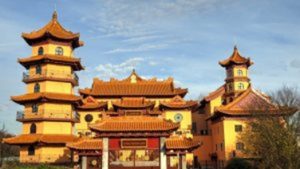
Vietnam’s declaration of independence in 1954 did little to end the wave of immigration to France. Despite a formal end to colonial relations between the two countries, Vietnamese students and intellectuals continued to settle in the city due to its superior wealth of opportunities. The escalation of the Vietnam War complicated this as the country was divided into two. The isolationist, communist North Vietnam made emigration difficult. During this period of conflict, a number of refugees fled the country from South Vietnam however. In the aftermath of the war, a significant number of refugees fled the country as it fell under Communist rule. The United States was the main country where refugees settled but France and particularly Paris was a major destination due to the pre-existing links between the two countries.
In the latter part of the 20th Century, the Parisian Vietnamese community expanded significantly, with the ‘Little Hanoi’ enclave being consolidated in the city’s 13th Arrondissement. More community organisations, restaurants and businesses entered around the Vietnamese population were set up as the population continued to grow.
In modern times, the Vietnamese community has dispersed widely throughout the city far beyond the initial confines of ‘Little Hanoi’. It is one of the most successful immigrant populations to assimilate in the city and have integrated well into the city’s cultural fabric.
Top Five Restaurants
Vietnamese cuisine is amongst the most unique culinary styles in the world, easily distinguishable from other forms of Southeast Asian cooking. Known for its healthiness and wide variety of ingredients, it has become increasingly popular throughout the world as the diaspora has spread throughout the world. Major ingredients include lemongrass, ginger and birds eye chillies. Major dishes include pho, a noodle soup. France is amongst the best places in the world outside of Vietnam to sample Vietnamese cooking and the there is a clear synergy between the two countries’ cuisines. The Banh Mi is a great example of this, a sandwich which combines Vietnamese and French ingredients.
- Bonjour Vietnam
Address: 6 Rue THouin, 75005 Paris, France
Opening Hours: 12pm-3pm, 7pm-11pm (Monday, Wednesday-Sunday)
One of the best-loved Vietnamese restaurants in Paris known for its authentic, no-frills style and top-notch cooking.
- L’Indochine
Address: 86 Avenue de CHoisy, 75013 Paris, France
Opening Hours: 11.45am-3.30pm, 6.45pm-10.30pm (Monday-Tuesday, Thursday-Sunday)
One of the best Vietnamese restaurants in the 13th Arondissement, L’Indochine is known fo its clean and authentic cooking and plethora of vegetarian options.
- Dong Huong
Address: 14 Rue Louis Bonnet, 75011 Paris, France
Opening Hours: 12pm-10.30pm (Monday, Wednesday-Sunday)
One of the most popular Vietnamese restaurants in the city offering a wide range of authentic dishes.
- Le Drapeau de la Fidelite
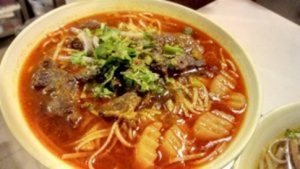
Address: 21 Rue Copeaux, 75015 Paris, France
Opening Hours: 12pm-9.30pm
A long-standing Vietnamese staple known for its small size, top-notch food and bargain prices.
- Lao Lane Xang 2
Address: 102 Avenue d’Ivry, 75013 Paris, France
Opening Hours: 12pm-3pm, 7pm-11pm
A stand-out Vietnamese restaurant known for its opulent surroundings and bargain lunch set menu.
West Africa
Paris’ West African population is amongst the largest immigrant communities in the city. Due to France’s heavy colonial involvement on the African continent, there are a large number of immigrants hailing from Sub-Saharan Africa based in France today. These countries include the Democratic Republic of the Congo, Senegal, Mali, Guinea. The city’s total sub-Saharan African population is believed to total in excess of 54,000, representing a considerable population demographic.
History
Paris’ West African population is the largest in Europe and difficult to estimate or characterise due to the wide range of cultures and countries that comprise it.
The city’s Senegalese population is perhaps the oldest West African immigrant community in the city, with a history stretching back to the early 20th Century. Senegal was an important colony in French West Africa and the country’s people had close ties with the French military. Indeed, the Senegalese Tirailleurs were an important aspect of France’s military, fighting in a number of conflicts throughout the late 19th and early 20th Centuries, most notably in both World Wars
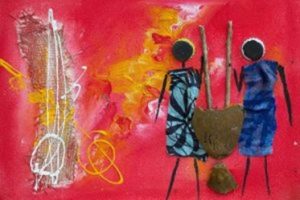
A large number of Tirailleurs settled in France after fulfilling their military obligations due to the superior employment opportunities. Prior to the Second World War, there was a fairly large Senegalese population in Paris and elsewhere in France, chiefly comprised of Tirailleurs or former Tirailleurs. The Senegalese population increased significantly as the 20th Century progressed due to difficult economic and ecological conditions in the country, which caused major displacement.
Other long-lasting West African populations in Paris include those from Guinea-Bissau, who arrived at the beginning of the 20th Century. A large number of these settlers were Manjacks, a small minority who integrated into French life due to their aptitude with navigation. The population increased steadily throughout the remainder of the 20th Century as families reunified.
In the latter half of the 20th Century, there was substantial migration from countries such as Mali, Mauritania, Benin and Togo, mainly from urban regions. At the end of the 20th Century, around 1990, immigrants began to settle from the Ivory Coast and Ghana, mainly due to economic reasons.
Given the range of countries that comprise the former region of French West Africa, there is a large range of these peoples living in Paris, each with unique and distinct cultures. Having assimilated into Parisian life relatively successfully, they have carved out a new identity for themselves. Many West African migrants have achieved considerable success in a wide range of fields, including the arts, sports and politics. A considerable number of France’s 2018 World Cup winning squad were of West African descent, illustrating the size and cultural importance of the demographic to the city and the country.
Top Five Restaurants
The cuisine of West Africa, as it encompasses a wide range of countries, is diverse and rich. Despite this, there are a number of common strands. Common dishes in all forms of West African cuisine include Fufu, a porridge-like dish. Jollof Rice and Groundnut Stew are also dishes that are ubiquitous throughout West Africa. Given its large West African population, Paris is one of the finest cities in the world to sample the region’s cuisine, with Senegalese, Ivorian and Cameroonian cuisines all well-represented in the city.
- L’Equateur
Address: 151 Rue Saint-Maur 75011, Paris
Opening Hours: 7.30pm-2am (Monday-Friday), 12pm-4pm, 7.30pm-2am (Saturday-Sunday)
A versatile West African restaurant exhibiting dishes from a wide range of countries including Senegal and Cameroon. Unassuming, reasonably priced and delicious.
- Ohinene
Address: 14 Rue de la Chine, 75020, Paris
Opening Hours: 12pm-3pm (Monday-Thursday), 12pm-3pm, 7.30pm-11pm (Friday-Saturday)
A high-quality Ivorian restaurant known for its top-notch seafood and spicy dishes.
- Le Petit Dakar
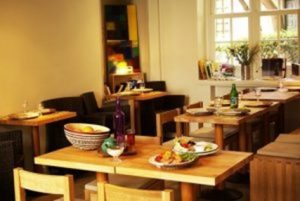
Address: 6 Rue Elzevir, 75003, Paris
Opening Hours: 11am-10pm
One of Paris’ finest Senegalese restaurants in the fashionable Le Marais neighbourhood. Best known for its colourful decor and delicious dishes.
- Waly Fay
Address: 6 Rue Godefroy Cavaignac, 75011, Paris
Opening Hours: 7pm-2am
Another top-notch Senegalese restaurant known for its great seafood dishes, particularly the fish dumplings.
- Le Dibi
Address: 46 Rue Polonceau, 75018, Paris
Opening Hours: 12pm-11pm
A low-key Senegalese restaurant in the 18th Arrondissement, this is a real gem known for its authentic dishes and atmosphere.
North Africa
Paris’ North African population is amongst the most sizeable in Europe, with countries such as Algeria, Morocco and Tunisia well represented throughout the city. This stems from French colonial influence in those regions. Algeria has the largest of these diaspora populations in Paris, with 30,000 residents. Morocco has 21,000 residents while Tunisia has 15,000. Amongst the most long-standing immigrant populations in Paris, North Africans remain a ubiquitous part of the city’s cultural identity.
History
North African immigration to Paris can be traced back to as early as the beginning of the 20th Century. In the aftermath of the First World War, a large number of North Africans from the aforementioned countries began to settle in Paris in large numbers. Despite being lumped together by the French as a single population mass, they were often at odds with each other over their cultural and national differences.
The countries’ colonial ties to France and the superior economic opportunities there made it an ideal immigration destination, compounded by its close proximity. In the case of Algeria specifically, there was an increased scarcity of employment opportunities, which encouraged mass immigration to countries such as France due to a perceived sense of greater social mobility.
From the very beginning, tensions emerged between the French and North African residents. These tensions were informed by ignorant racism, fuelled by ongoing conflicts in the region. The 18th, 19th and 20th Arrondissements quickly emerged as major population hubs for the gestating community.
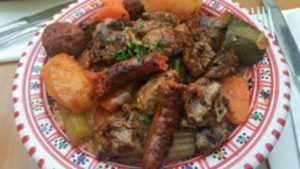
Algeria, as a French ‘department’, was granted virtually unlimited immigration rights to France, which saw a considerable population form in the country throughout the 20th Century, particularly concentrated in major cities such as Paris. Algeria’s independence in 1961, earned after a particularly bitter and brutal conflict with France, had a significant impact on the population in France. In addition to stemming further migration in the short term, it severely impacted relations between the two populations and saw a considerable uptick in racial violence aimed towards Algerians, which often affected other North African populations. The population displacement caused by the Algerian War saw over 90,000 ethnic Algerians relocate to France, mostly settling in Paris.
As the 20th Century progressed, the North African population steadily increased from all different regions and backgrounds. A major demographic change was the massive influx of Maghreb Jews, who arrived in exile in line with a Jewish exodus from the Arab world. The North African population in Paris remains predominantly Muslim however. It has since dispersed throughout the city, with no single centre, although Saint-Denis and Sarcelles are major population hubs. Despite the recurrence of racial tensions, the population is one of the most ubiquitous minorities in the city and has provided a significant cultural contribution to its identity.
Top Five Restaurants
North African cuisine is synonymous with Maghreb cuisine, a unique cooking style, which combines elements of Middle Eastern, Mediterranean and Arab cuisines. There are distinctions between the styles of Algerian, Moroccan and Tunisian cuisines although they retain a number of notable similarities. Spices such as cumin, ginger and saffron are common. Couscous is a staple seen across all forms of Maghreb cuisine, as is the tagine, a famous Moroccan dish that recurs throughout the region. Paris, with its massive and vibrant North African community, is one of the best places out of the Maghreb region to sample this unique and rich cooking culture.
- Chez Omar
Address: 47 Rue de Bretagne,75003, Paris
Opening Hours: 12pm-2.30pm, 7pm-11.30pm (Monday-Saturday), 7pm-11.30pm (Sunday)
A small and immensely popular Maghreb restaurant known for its couscous dishes. Often very busy, the constant queues are a testament to its quality and longevity.
- Le Souk
Address: 1 Rue Kelle, 75011, Paris
Opening Hours: 7.30pm-11.30pm (Tuesday-Friday), 11.20am-2.30pm, 7.30pm-12am (Saturday), 11.30am-2.30pm, 7.30pm-11.30pm (Sunday)
A Roquette institution with a classic Moroccan decor. Offers a wealth of options but is best known for its tagines.
- Les Caves du Petit Thouars
Address: 12 Rue Depetit-Thouars, 75003, Paris
Opening Hours: 7am-2pm
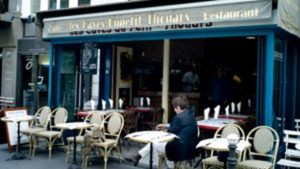
- Les 4 Freres
Address: 37 Boulevard de la Villette, 75010, Paris
Opening Hours: 12pm-3.30pm, 6pm-11.30pm (Monday-Thursday), 6pm-11.30pm (Friday), 12pm-3.30pm, 6pm-11.30pm (Saturday-Sunday)
A family-run Algerian restaurant best-known for its top-quality and reasonably-priced kebabs, couscous and desserts
- Le Petit Bleu
Address: 23 Rue Muller, 75018, Paris
Opening Hours: 7pm-12am (Monday), 12pm-3.30pm, 7pm-12am (Tuesday-Sunday)
An unassuming and cheap Montmarte restaurant specialising in Moroccan classics such as tagines and couscous open until 1 in the morning.

